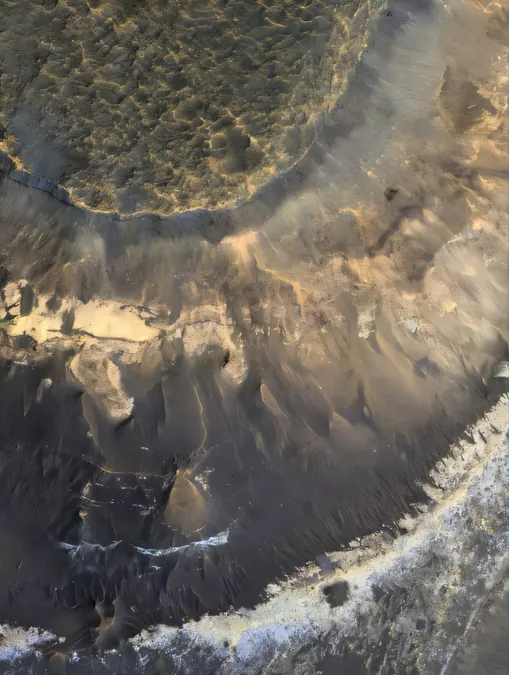
Ancient Martian Clay Layers: Could They Have Harbored Life?
2025-06-17
Author: Rajesh
Could Thick Clay Layers on Mars Be the Key to Ancient Life?
Mars, the mysterious red planet, harbors thick layers of clay stretching hundreds of feet, captivating scientists in the quest for ancient life. These clay formations, formed only in the presence of water, have garnered increased attention following a groundbreaking study from The University of Texas at Austin.
A Closer Look at the Origins of Martian Clay
Researchers have unveiled that many clay outcrops originated near long-standing bodies of water that existed billions of years ago, creating ideal conditions for the potential emergence of life. This stable environment, rich in minerals, could have provided the perfect ingredients for life to thrive.
Lead author Rhianna Moore highlights, "These areas are stable terrains with ample water, allowing favorable conditions for life over extended periods." Such insight offers a glimpse into a more hospitable past for Mars.
Understanding Mars' Geological History
This study is part of the UT's Center for Planetary Systems Habitability, aiming to explore life's origins across different planetary bodies. Remarkably, Moore has since joined NASA to contribute to the Artemis mission, paving the way for lunar explorations.
The study also suggests that the clay deposits might indicate an imbalanced ancient water and carbon cycle on Mars, shedding light on why certain carbonate rocks, commonly found on Earth, are notably absent on the Martian surface.
Exploring the Impact of Water on Martian Clay Formation
In its youth, Mars was a vibrant, wet world brimming with lakes and rivers—conditions that have sculpted its current geological features. However, prior to this research, the environments that led to the formation of these clay layers remained largely enigmatic.
Analyzing data from a global survey conducted by NASA's Mars Reconnaissance Orbiter, Moore examined the topographical characteristics of 150 previously identified clay deposits, discovering that they tend to cluster at low elevations near ancient lake beds, away from vigorous valley networks.
Martian Clays: Earthly Parallels
Tim Goudge, a co-author of the study, draws intriguing comparisons: "On Earth, thick clay sequences thrive in humid regions with minimal erosion, suggesting a similar situation on Mars." This revelation proposes that ancient Martian landscapes might have shared traits with Earth’s rich tropical environments.
The Tectonic Differences Shaping Mars' Condition
However, Mars presents a stark contrast to Earth. The absence of shifting tectonic plates means fresh rock—essential for chemical reactions with water and atmospheric CO2—is scarce. This unique geological backdrop has led to stagnant conditions, where released CO2 remained trapped, potentially making Mars warmer and wetter, conducive to clay formation.
Moreover, this lack of fresh rock likely hampers the necessary reactions for carbonate formation, prompting clays to absorb available water and chemicals instead. Moore notes, "This might be one factor behind the puzzling absence of predicted carbonates on Mars."
What Lies Ahead for Martian Exploration?
With this new understanding of Martian clay environments, the journey into Mars' past only deepens. Could these ancient clay deposits hold the clues to past life—and even future explorations? The saga of Mars continues to unfold, one layer at a time.

 Brasil (PT)
Brasil (PT)
 Canada (EN)
Canada (EN)
 Chile (ES)
Chile (ES)
 Česko (CS)
Česko (CS)
 대한민국 (KO)
대한민국 (KO)
 España (ES)
España (ES)
 France (FR)
France (FR)
 Hong Kong (EN)
Hong Kong (EN)
 Italia (IT)
Italia (IT)
 日本 (JA)
日本 (JA)
 Magyarország (HU)
Magyarország (HU)
 Norge (NO)
Norge (NO)
 Polska (PL)
Polska (PL)
 Schweiz (DE)
Schweiz (DE)
 Singapore (EN)
Singapore (EN)
 Sverige (SV)
Sverige (SV)
 Suomi (FI)
Suomi (FI)
 Türkiye (TR)
Türkiye (TR)
 الإمارات العربية المتحدة (AR)
الإمارات العربية المتحدة (AR)